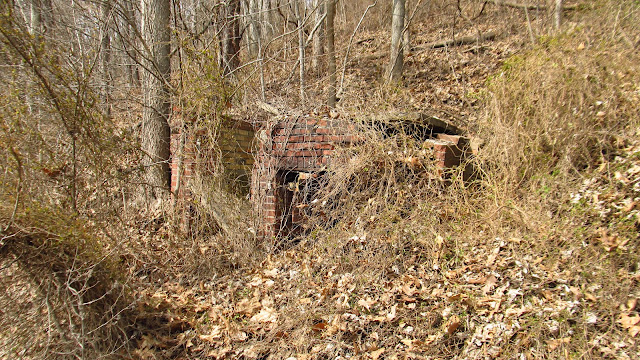Last week I posted some photos of the lime kilns in Germany, PA on my Facebook page. Somebody on the page told me about this other lime kiln in Washington County and we decided to head out yesterday and get a look at it. The situation is the same as the lime kilns in Indiana County, there is nothing that I can locate concerning the history of these things.
This one is only a single kiln and is smaller than the one in Germany. There are other discernible differences here however. Part of the stone on the inside of the kiln has been replaced with street paver brick. This leads me to believe that this may have seen some later usage. Also, the little bit of knowledge we had acquired since coming across the first kiln led to us searching this site a little better. Now that we actually know what these things are, we started searching for an old limestone quarry. We didn't find one. There is small working path carved into the hillside leading to the charging area of the kiln. All along this path is an outcrop of limestone. We believe that this kiln was fired on an as needed basis and when limestone was needed, it was simply taken from the outcrop. We found a few pieces of coal scattered about but they could have been washed down the creek during floods. Coal may have been brought in to fuel the kiln or they may have used wood.
Nevertheless, it's great looking kiln and it's a great, quiet location.
 |
Looking in at the stoke hole and furnace. |
 |
Steel grate. |
 |
Great stonework. |
 |
Looking down at the charging hole. Still too much snow.... |
 |
Notice that side is still stone..... |
 |
.... while this side has been replaced with brick. |
 |
This is part of a concrete slab that we believe was used as a bridge to cross the creek. |

































































